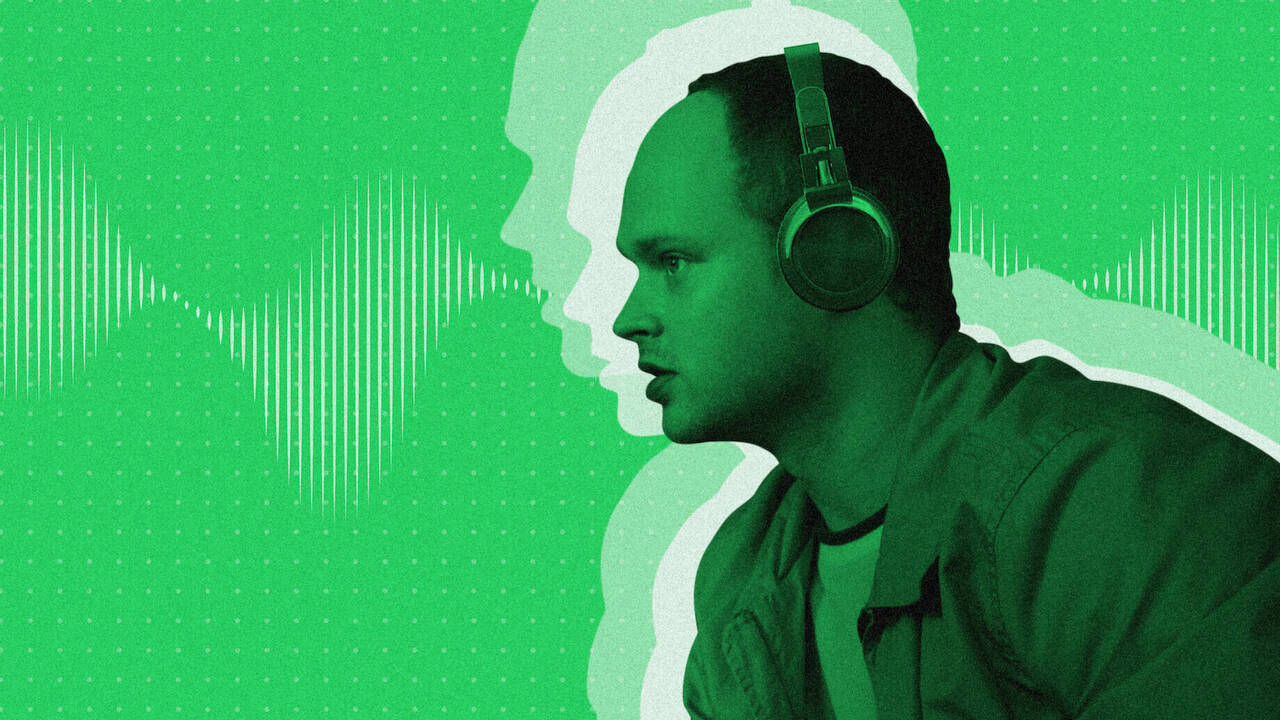Luke Slater’s ‘DIALOGUE’ is a captivating commentary on communication, socialisation and isolation
Image courtesy 3D Agency
If anything the pandemic has come to affirm, it is that we are inherently social creatures. The global lockdown and periods of self-isolation brought with it the need for us to adapt our methods of socialisation and communication. Technology became more essential than ever, and in many ways we found modes to be together while apart. DIALOGUE arrives as a pinnacle example of this. The latest project from Luke Slater forgoes the producer’s usual beat driven, dance floor focussed techno in exchange for a collection of ambient sound collages which ruminate on the experience of isolation. It follows in the lineage of lockdown-era outputs from dance music makers facing the conundrum of creating music for spaces of domesticity rather than spaces of gathering and community. The function of dance music shifts from being the unifying pulse of a crowd to becoming a companion for the body in isolation, a turn inwards as opposed to the outward call to arms of the four on the floor. DIALOGUE is very much Slater’s response to this conundrum and his addition to the evolution of social communication.
Created at the height of the pandemic and the during the confinement of lockdown, DIALOGUE is a mostly conceptual collaborative work that sees Slater engage in conversations between fellow music makers through the formulation of “musical letters,” soundscapes of ambient electronics sent back and forth from Slater to his collaborators. The four tracks trace the communication between Slater, KMRU, Speedy J, Tom Moth, Lady Starlight and Anthony Child. Each features two artists at a time engaging in an improvised, long form sonic conversation with Slater. With each track on DIALOGUE being between 15 and 25 minutes long, the experience is immersive and theatrical. Each piece is a work of sound design, synthesised from electronic sounds that assume the role of the words that may be exchanged between these artists during actual conversation.
Following this modus operandi, there is a significant focus on texture. Through the device of electronic sound as a shared language, Slater and his collaborators are able to formulate a sonic lingua franca and in a sense, each assume the role of players in their own improvised theatre scenes. Sometimes, these textures become a motif synonymous with one of these players, conduits for the voices of the artists in the diegesis of their dialogue. Sometimes they shift out of focus and evolve into something entirely different, pivoting the scene in a whole new direction. Much of these sonic choices are rooted in their function; to communicate. A siren like refrain wails through the psychedelic distortion of DIALOGUE #3, its harmony pulling the elements of the track together in its wake until it becomes the sole speaker, only to dip out of sight into the ambient depths once again. DIALOGUE #1 features the distinct and tactile bleep of morse code, which resonates through washes of static and the soft thud of a syncopated metronome to fill the space around it with its repeated phrase.
It could be argued that the purpose of DIALOGUE is to fill space, both in the sonic and real sense. The arrangement of each track seems to be designed so that its parts permeate through the sonic space and become part of the real space around you. The ‘dialogues’ are so texturally layered that they possess a deft richness, despite being created from a few minimal elements. These sounds blend incredibly well into the ambience of domestic isolation but also abstract this ambience at the same time, making each sound collage immensely captivating. You find yourself sinking into the world that Slater and his friends set up, and the beauty of the work lies in the infinite number of ways these conceptual conversations could be interpreted. DIALOGUE’s greatest strength is its ability to play with our innate instinct to make meaning. It occupies the mind by setting up the simple scenario of a conversation between friends, and then giving us abstract threads from which to formulate our own theories about what is being said. Each dialogue becomes an abstraction of social interaction, a rumination on socialisation while in an imposed state of solitude.
As a work created for and as a response to our present time, DIALOGUE triumphs in its commentary on the social body in isolation. It is an incredibly emotive work, deeply meditative almost to the point of spirituality, whose success lies in how it looks to fill the void of isolation by turning us towards our only constant companion; ourselves.
DIALOGUE is released via A-TON and is available to download here. Listen to the captivating DIALOGUE #1 with Luke Slater, KMRU and Speedy J below.
Follow Luke Slater:
Facebook | Twitter | SoundCloud



